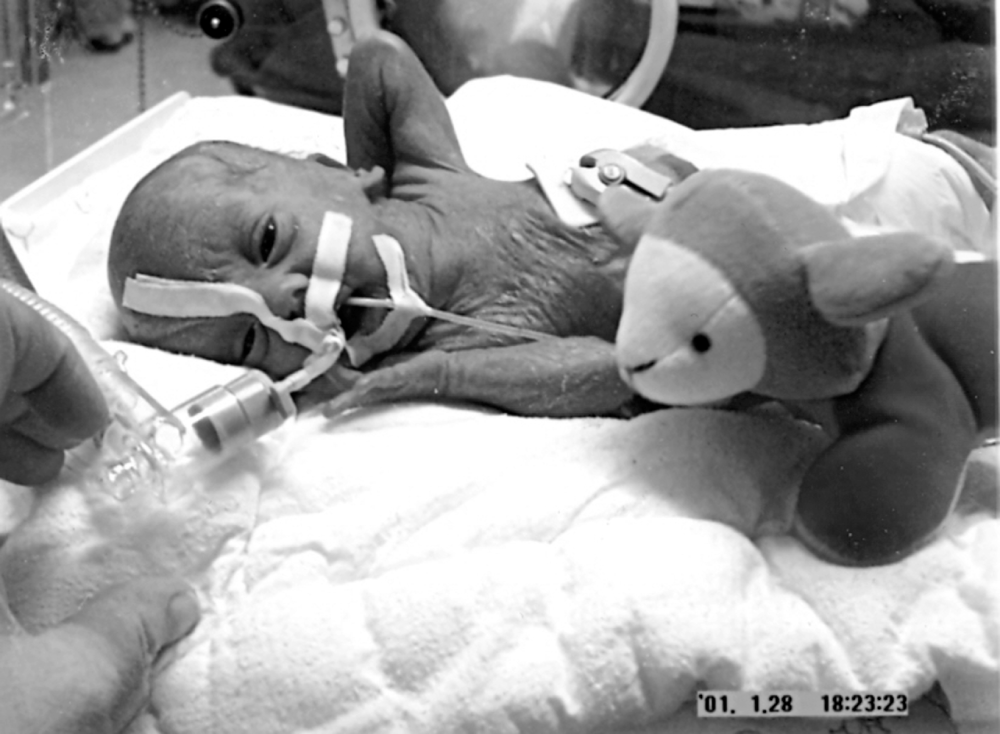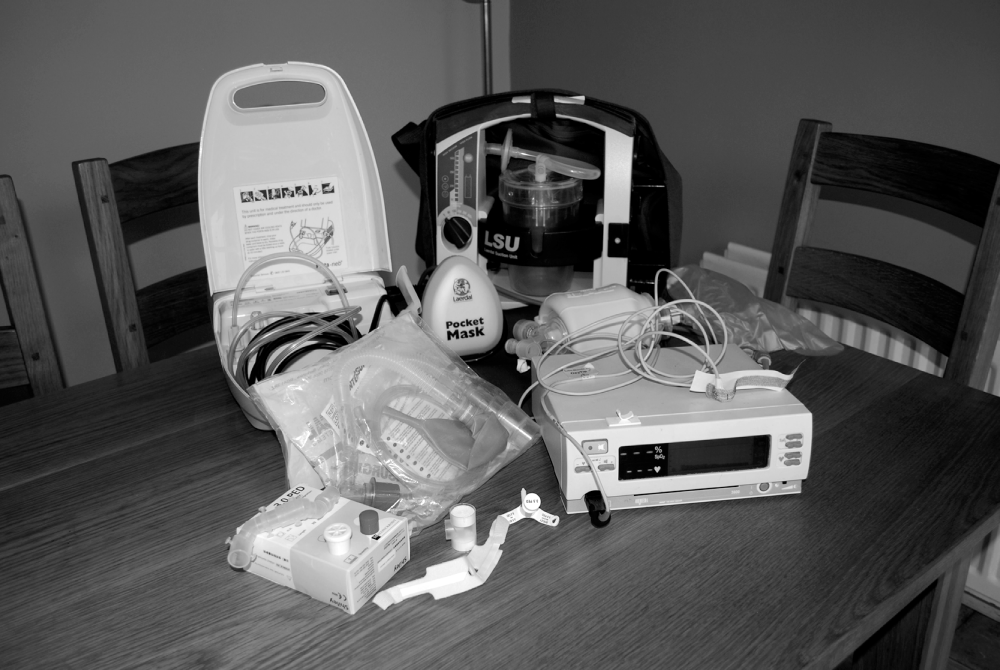Ian and Nicola Markwell Ryan was born on Christmas Day 2000, after a fast journey down the motorway to the maternity hospital. He was born 15 weeks premature, weighed in at 1 pound 11 ounces (762 g) and was delivered by Caesarean section. Since the time that Nicola had realised that she was having contractions at home, things all happened so quickly that we did not have time to think of names. When we were shown into the neonatal unit to see him for the first time, we were introduced to him as Joseph, but by that time we had already decided on Ryan as a name and quickly got it corrected. Ryan was not actually due until April 2001, and as we sat and watched him in the incubator over that Christmas period, it was hard to comprehend what would be in front of us over the coming months and years. As Ryan was born at 25 weeks, he was ventilated for 60 days and developed chronic lung disease (see Figure 11.1). His early weeks in hospital were very difficult, as he lost weight, was given phototherapy for jaundice and was tube fed. Over these weeks, the aim of the medical and nursing staff was to reduce Ryan’s dependence on ventilation and they made steady progress towards this goal. FIGURE 11.1 Ryan in neonatal unit. Nevertheless, it soon became apparent that Ryan would be difficult to extubate. On one occasion we had a difficult situation, when Ryan extubated himself and the medical staff found it difficult to re-intubate him. After this episode, it was concluded that he had sub-glottic stenosis, and therefore the best way to reduce his dependence on the ventilator would be for him to have a tracheostomy. This was successfully completed on the 21 February 2001, and within a matter of days Ryan’s dependence on the ventilator had stopped, although he remained on low flow oxygen for the remainder of his time in hospital. Gradually, Ryan started to gain weight and improve to the point that the medical staff started to talk about discharging him, but this was on the assumption that we would take him home attached to an oxygen cylinder which was connected to his tracheostomy tube. Although this was initially a very daunting prospect, the medical staff, nurses, and technicians prepared us well for what was involved in handling the oxygen cylinders and managing Ryan’s care, whilst on oxygen. We therefore started to prepare to bring him home, and he was finally discharged from hospital in May 2001. Unfortunately, this was not the end of the medical problems as within a week of discharge, we were back in intensive care due to Ryan aspirating on his food and milk and a significant reduction in his lung function to the point that he stopped breathing at home. It was a long week in intensive care, but fortunately Ryan made a full recovery and was discharged again, after a revision of his medication. Over the next period of months, Ryan was in and out of hospital on a regular basis, only remaining at home for 1–2 weeks at a time. We seemed to be going round in a vicious circle. Ryan had a gastro-oesophageal reflux and he was aspirating milk into his lungs which were already badly damaged, causing severe chest infections, which required hospitalisation. To try and treat this, the medical options were thickened milk and food, to try and prevent the reflux and other medication to try and empty the contents of his stomach quickly. Eventually, it was concluded that the best solution would be to conduct a fundoplication, which is a surgical procedure where the top of the stomach is tightened to prevent the stomach contents from refluxing back and entering the windpipe. This was completed in September 2001, and it was soon clear that the issue with the reflux had been solved. The cycle of hospital visits was broken for now. From September 2001, Ryan’s care was primarily managed at home. He had a tracheostomy tube, which needed changing weekly and required regular suction. In order to maintain Ryan’s breathing he required low-flow oxygen via a cylinder 24 hours a day and he also received nebulisers four times a day. His feeds were thickened with carobel and he was given domperidone medication daily to help prevent the reflux (despite the fundoplication). In order for us to care properly for Ryan at home we had to transform his bedroom and other parts of the house into what looked like a small ‘medical’ centre. The essential equipment and facilities which we needed were: FIGURE 11.2 Ryan’s equipment at home. The treatment of Ryan’s medical issues changed as he became older: As Ryan began to be regularly assessed through the community nursing system, a number of other medical or developmental issues emerged: Each of these issues tended to be dealt with by a different group of people, either community or hospital based, and it was one of our main frustrations, particularly in the early days of Ryan’s care at home, that there did not seem to be one person charged with Ryan’s overall care. With Ryan’s medical history and treatment, we have spent a significant portion of time in hospitals. Particularly over the first nine months of Ryan’s life, we seemed to spend half of our lives in hospital. This meant that we came to know quite a few of the medical staff fairly well. As Mum, Nicola, was qualified in adult nursing, she seemed to slip easily into the ward routine, particularly those wards where Ryan was cared for over longer periods of time.
CHAPTER 11
Reflective Account
INTRODUCTION
MEDICAL HISTORY – THE FIRST NINE MONTHS

PLANNING CARE

HOSPITAL TO HOME
Stay updated, free articles. Join our Telegram channel

Full access? Get Clinical Tree


